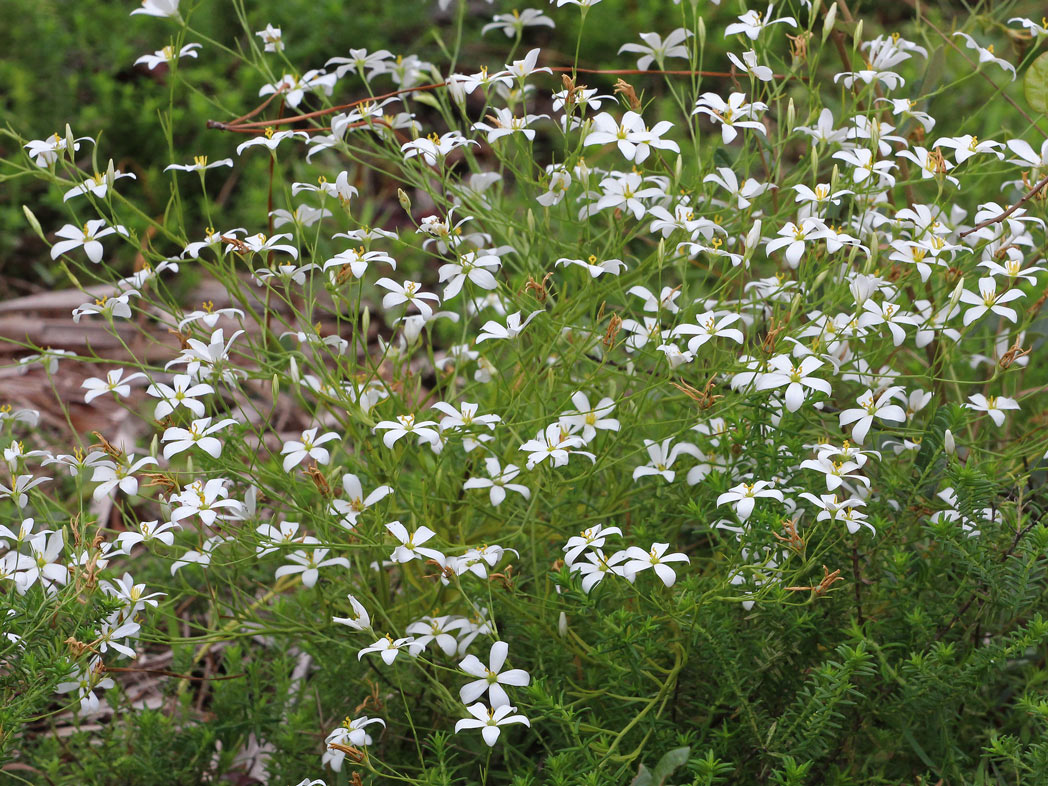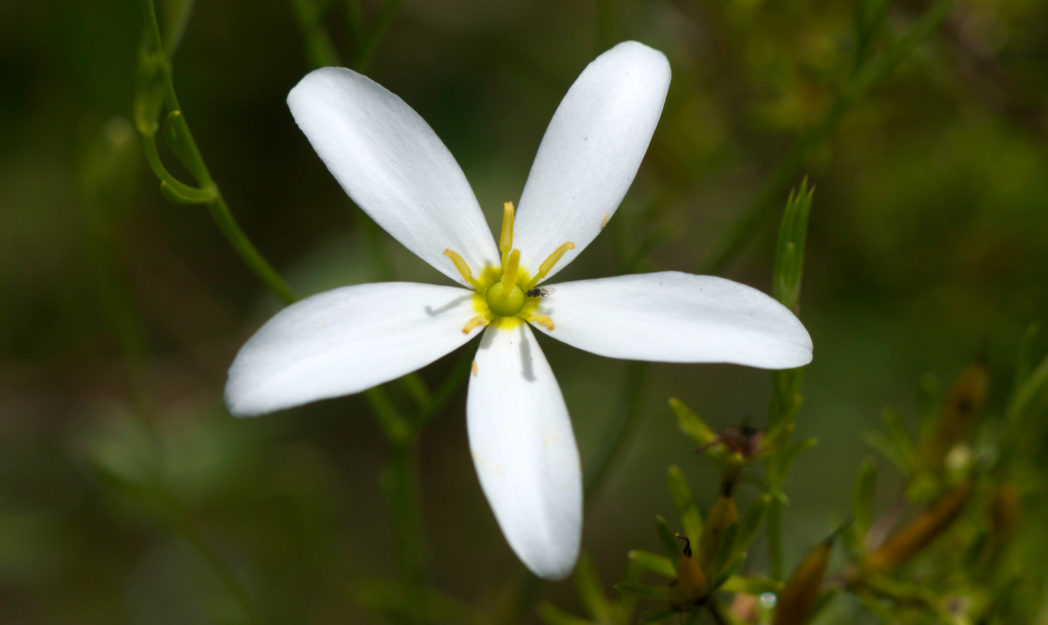Shortleaf rosegentian
Pictured above: Shortleaf rosegentian (Sabatia brevifolia) by Katherine Edison. Click on terms for botanical definitions. View post as a PDF.
Shortleaf rosegentian (Sabatia brevifolia) is a herbaceous annual wildflower that occurs in moist to wet pine flatwoods, coastal swales and wet prairies throughout Florida. Its white, starlike flowers typically bloom in spring through fall, but may bloom in winter if temperatures are unseasonably warm. They primarily attract butterflies.

Individual flowers have five white petals with a greenish-yellow base. Calyces are five-lobed. Each flower has five bright yellow stamens surrounding a greenish-yellow pistil. Flowers are borne on branched stems. Leaves are short (<1” long), narrowly linear (1/8” wide) and sessile. They are oppositely arranged and may be appressed as they ascend the stem. Leaf surface is glabrous. Fruits are small capsules containing many tiny seeds.
The genus Sabatia is most likely a reference to Liberato Sabbati, an Italian botanist. The species epithet brevifolia is from the Latin brevi, or “short,” and folium, or “leaf,” referring to the plant’s short leaves.
Family: Gentianaceae (Gentian family)
Native range: Nearly throughout
To see where natural populations of Shortleaf rosegentian have been vouchered, visit florida.plantatlas.usf.edu.
Hardiness: Zones 8A–10B
Soil: Moist to moderately dry, sandy soils
Exposure: Full sun to partial shade
Growth habit: 1–2’+ tall
Propagation: Seed
Garden tips: Shortleaf rosegentian is not commercially grown. Look for it in its natural habitat.
For more information on other Sabatia species, see these resources:

